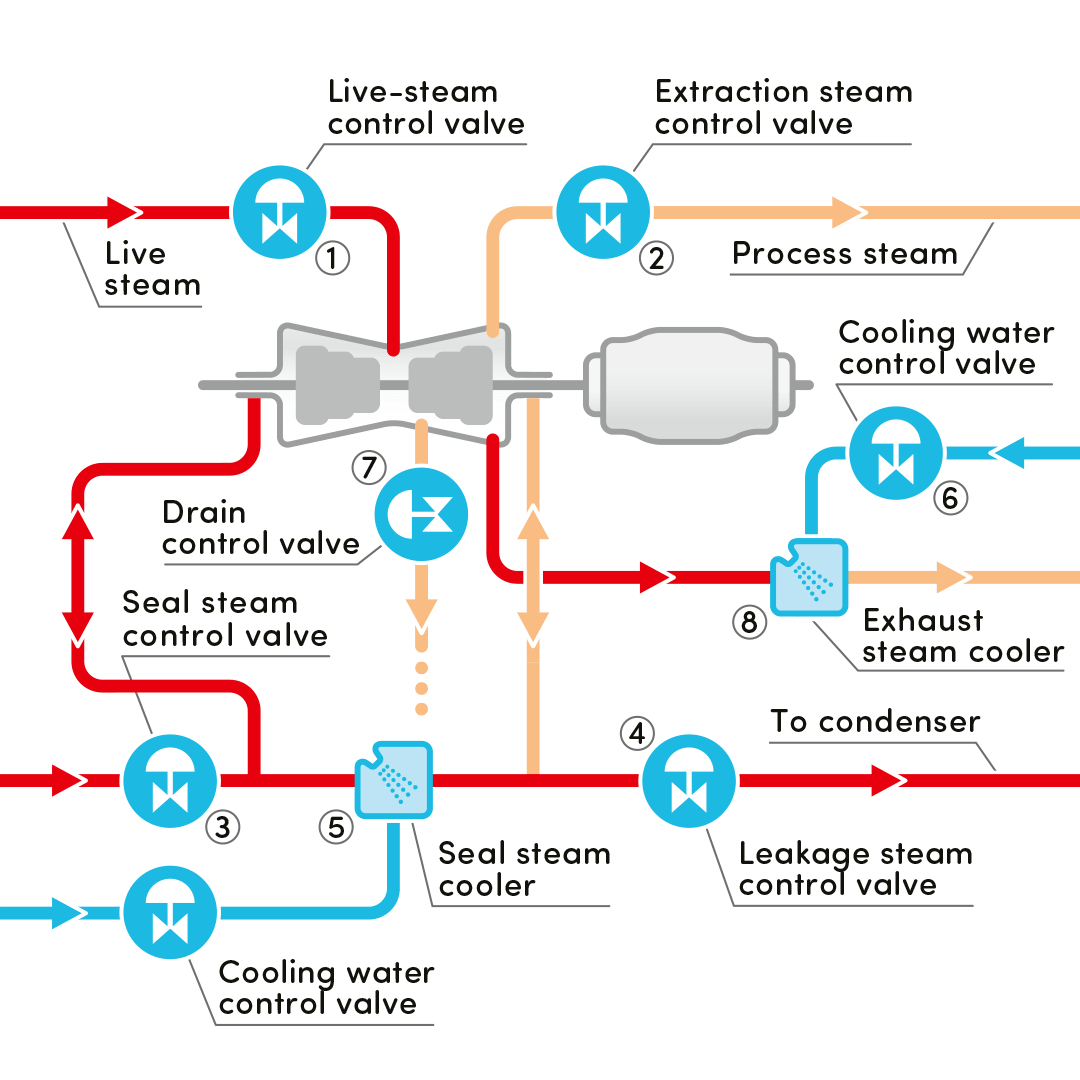
Turbine
With us you will find the right control valve for every process step around the turbine of the power plant.
1) Live steam control valve
This valve is used to control the pressure for the entry of the live steam into the turbine. Turbines for medium-sized heating and industrial power plants require straight-way and angle-control valves from DN100 to DN600 with fast response times. (series: 6N, 6H, 350, 380)
2) Extraction steam control valve
This valve can feed the MP steam header to meet the power plant’s own requirements or regulate the pressure of process steam in industrial plants (e.g. paper mills) that frequently control multiple steam headers to supply a wide variety of heat exchangers. To this end, straight-way and angle-control valves (DN100 – DN600) with as large rated Cv value as possible for low differential pressure and a full stroke positioning time of less than 2 seconds are essential to tap the turbine with minimum energy loss. (series: 6N, 6H, 350, 380)
3) Sealing steam control valve
The HP, LP, and MP turbine shafts of steam turbines are axially sealed with respect to the turbine housing by using labyrinth seals near the shaft throughput. The sealing-steam control system must maintain a predetermined low level of overpressure at the shaft labyrinths, regardless of load changes in the turbine or condenser. When the seal-steam pressure is too high, leakage steam from the shaft labyrinths can contact the bearing bodies via the oil-sealing rings and condense to water in the oil system. When the seal-steam pressure is too low, on the other hand, air can be taken in, which reduces vacuum pressure and further promotes the formation of condensate. The seal-steam control mechanism is designed to feed steam to the labyrinth chamber and purge accumulating leakage steam, depending on the type of turbine and the way it operates. Seal steam (typically live steam) is fed using the seal-steam control valve (DN15 – 100), which is often required to regulate in a very precise manner under high differential pressure. (series 8C, 6H, 190)
4) Leakage-steam control valve
The conditions that prevail for the aforementioned valve apply here as well. Leakage steam is purged using the leakage-steam control valve (DN50 – 300), whereby the steam is extracted into the condenser vacuum behind the valve. (series 8C, 6N)
5) Seal-steam cooler
Live steam often has excessively high temperatures, especially at the shaft on the low-pressure side of industrial turbines. This can be counteracted with a mini cooler (DN65 – 150) or similar. (series 595, 596)
6) Cooling Water Valve
To control the temperature of the turbine, the cooling water (usually condensate) is supplied to the cooler with this valve DN15 – 50. (series: 8C, 6H, 120, 130, 190)
7) Drain control valve
All low points in the steam pipeline and turbine chambers must feed accumulated condensate to the condensate collector as the system warms up and during operation by way of an on/off or control valve. (series: 8C, 6H, 120, 130, 190)
8) Exhaust steam cooler
Exhaust steam from the turbine supplies the low-pressure steam headers (whose temperature is cooled by the exhaust cooler), depending on the type of turbine and the way it operates in industrial plants. (series: 590, 596, 597)